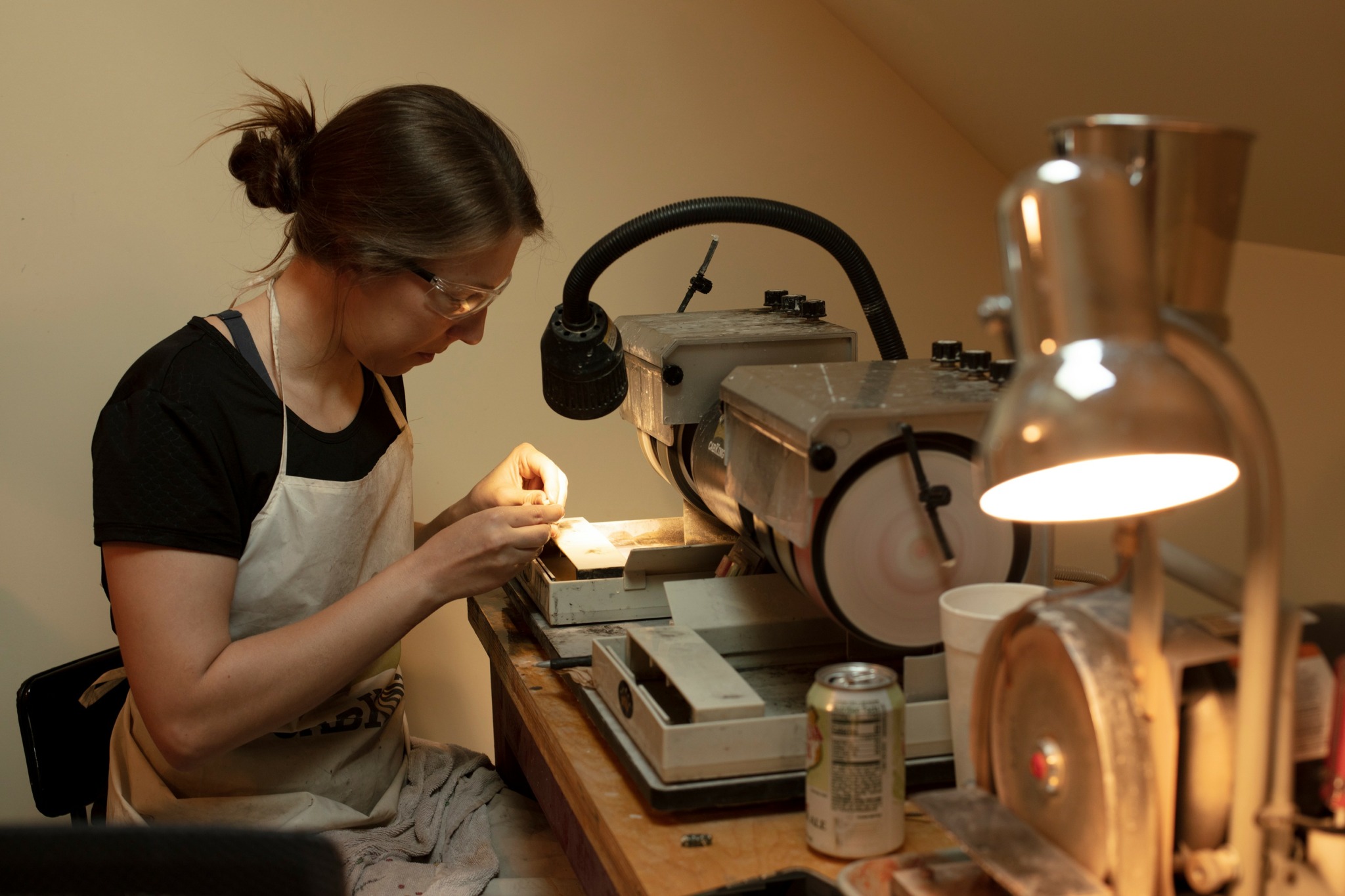We’re excited to introduce you to the always interesting and insightful Caitlin Albritton. We hope you’ll enjoy our conversation with Caitlin below.
Alright, Caitlin thanks for taking the time to share your stories and insights with us today. What’s been the most meaningful project you’ve worked on?
All of my figurative inlay jewelry pieces hold a special place in my heart since they are all woven with personal stories of growing up in Florida and growing out of personal struggles, but my recent Lake House Collection of jewelry is the most meaningful to me.
The Lake House Collection is inspired by my calm and joyous memories at my parent’s lake house in Citrus County, Florida. This simple but special place was always a safe haven for emotional healing while growing up.
When I was younger, I would sit out on the screened back veranda at my parent’s lake house to enjoy the whiteout of rain from the summer thunderstorms where the rain was so thick, you couldn’t even see the houses on the other side of the lake.
During this time, my parents and I would just sit out there and enjoy the cool mist and listen to nature’s wet music. Sometimes we would lightly chat, but it was a really enriching feeling to be surrounded by love even in silence.
When the rain ended, there would be this kind of light purple haze from the heavy rain that just fell that would hover above the lake.
I wanted to capture that moment of meditative calm and joy under the veranda, where the weight of the week—working through depression and an eating disorder—could be washed away during the weekend. “Lilac Veranda (Contemplate 3) was made to capture those vivid memories and feelings.

Awesome – so before we get into the rest of our questions, can you briefly introduce yourself to our readers.
Growing up in Florida, pirate and treasure lore is really big around here so when my parents took me to see the giant gold bars and emerald crosses from the Atocha shipwreck at the Mel Fisher Museum, I fell in love with the fact that hidden treasures are out there waiting to be found. This seeped into other kinds of treasure hunting, like my love of rock hounding.
Years later after getting my bachelor and masters degrees in painting and studio art, I really started to think hard about where I wanted to go next with my art. At the time, I felt like pressure was being placed on making huge, larger-than-life paintings. That didn’t feel authentic to me personally when I was more interested in making small, intimate art pieces.
So instead of going big, I turned back to my passionate hobby of rockhounding and wondered how I could combine my love of painting and rockhounding into some kind of wearable art.
From there, I received a grant from the Arts Council of Hillsborough County to take a few workshops at William Holland School of Lapidary Arts in inlay and intarsia, which are two ways of making mosaics out of silver and hand-cut stone. I immediately knew that this was what I was meant to spend the rest of my life doing and I haven’t touched my paint brushes since!
For those that aren’t familiar with the process of inlay, it’s very much like creating a jigsaw puzzle out of natural stones that fit snugly into a metal recess and then set with a strong epoxy. Most inlay artists choose to do more geometric designs since it’s easier to fit a rectangle to a rectangle, but I prefer luscious organic shaped stones.
I hand-cut every single stone and there are on average about 16 individual pieces of stone in one of my signature figurative pendants. Each stone has to undergo 6-8 stages of cutting and polishing before I put it into a sterling silver channel that I build by hand so it’s quite a meditative practice.
As soon as I got home from the grant workshops, I was already developing my own way of doing cobblestone inlays, which is a technique of doming the surface of each stone in a mosaic inlay to create a really neat texture and extra added visual yumminess. This cobblestone technique is what I’m really known for in my figurative inlay jewelry pieces.
The female figure has always shown up in my works throughout my past art going back to high school. Growing up being a perfectionist, this mentality turned into an eating disorder when I was a teen and young adult. I’ve always seen this thread of grappling with the figure in any art I’ve done, but the figures in my inlay jewelry are the most celebratory of them all as I’ve worked to get out of that dark place in my life.
I love the quote from Lao Tzu that “Water is fluid, soft, and yielding. But water will wear away rock, which is rigid and cannot yield. As a rule, whatever is fluid, soft, and yielding will overcome whatever is rigid and hard. This is another paradox: what is soft is strong.”
That really struck me to accept my struggles and vulnerabilities, and make work that celebrates emotional strength, resilience, independence, and even desire. So that’s why you’ll see my abstracted figures in poses of thought and have an atypical kind of beauty. They encompass a strength reflected in a meditative magnitude that may not initially appear powerful at first glance.
I know inner strength can be hard to express in visual art without additional words but if anything, I hope people can feel the depth of whole-heartedness I put into my art.
–
While I do use some of my self-collected materials in my inlays, I have a pretty large collection of rocks from all around the world so I have a large palette of Mother Nature’s colors and patterns to work with. Selecting colors for each piece takes a lot of thought since I use color as language to help emotions and feelings come out of an inlay.
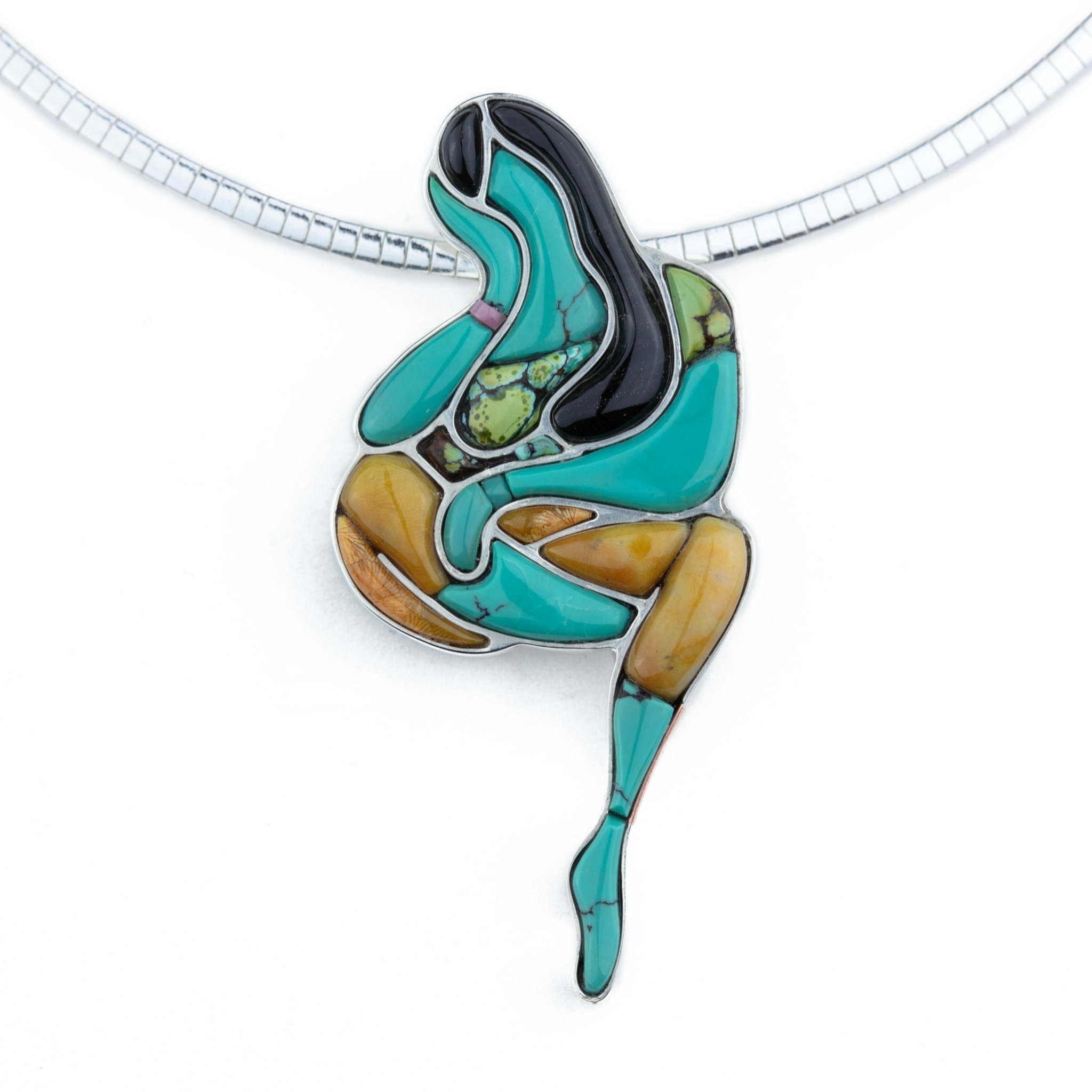
Do you think there is something that non-creatives might struggle to understand about your journey as a creative? Maybe you can shed some light?
Honestly, even creatives may not understand your journey.
When I first left what I’d call the “formal art world” and stopped painting, I don’t think but a few of my art acquaintances could understand how I could go from that direction to jewelry. Either the jump seemed too random, or perhaps even they didn’t take jewelry as something as “serious” an art form. Beauty didn’t seem to be “in” and I felt like it was a useful tool to get people to dive deeper into a work of art.
It was really tough having a background in that side of the art world, then feeling like I had to start all over again. But truly, I never really felt like I was a part of that crowd and I feel so at home with my new-found lapidary and jewelry communities—they are some of the most helpful, supportive, and generous folks in terms of sharing knowledge.
A big thing I get from non-creatives is that they don’t see the figures in my inlays since often they are kind of hidden. I recall someone jokingly saying that my piece looked like intestines. You have to realize that some people are always willing to be a jerk and brush it off as a joke because they know how much your art means to you. It’s fine if they don’t get it, they’re just not “my people” yet!
So all of that to say—no one but you will fully understand your journey. Find your own kind of self-validation and follow your vision for what your mind and body aches to bring to life in an art piece.
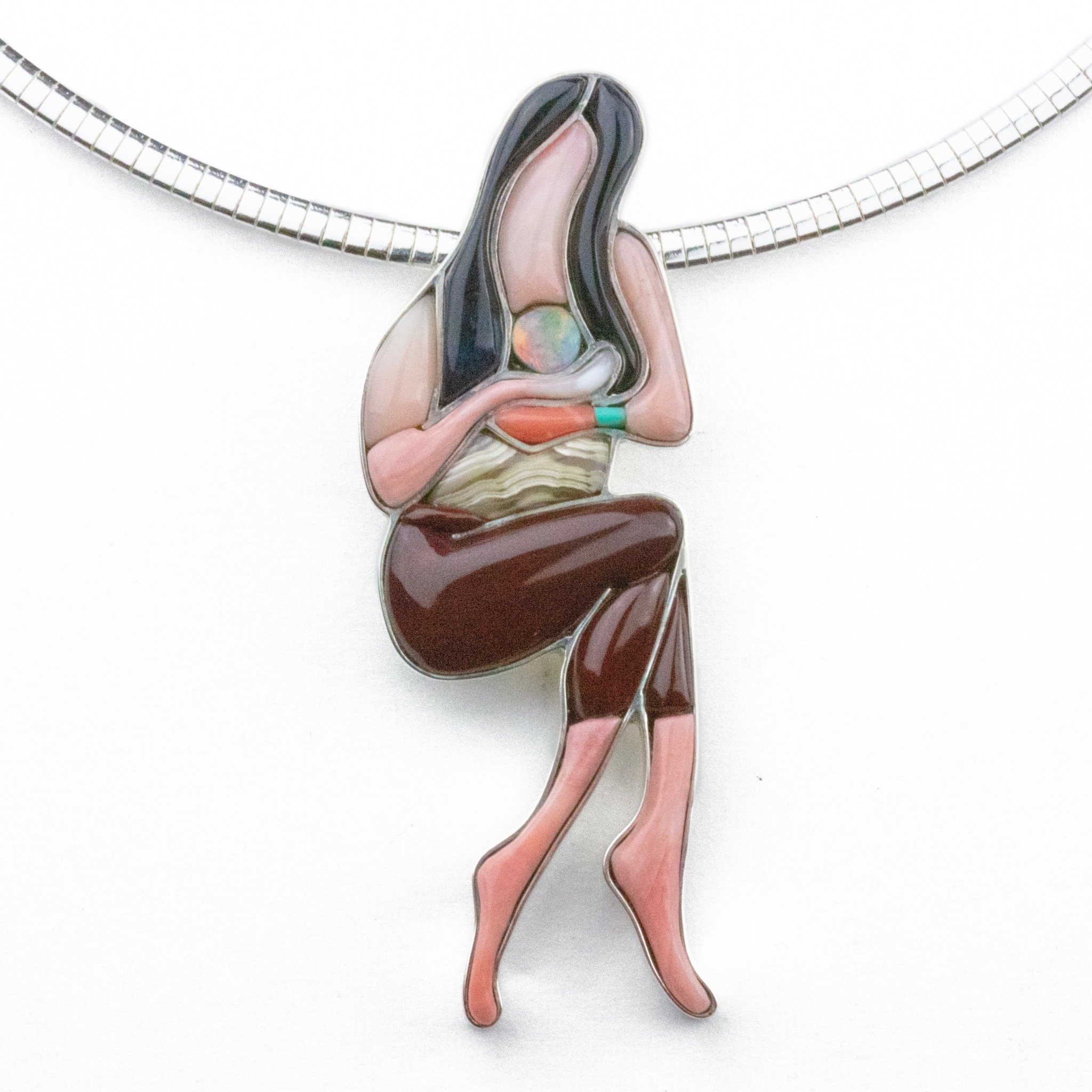
Can you tell us about a time you’ve had to pivot?
Having children is a huge game-changer when it came to studio time and having to pivot priorities. Before children, I was in the studio 5-7 days a week and was able to always able to fulfill my creative compulsions since I know I don’t feel like myself when I haven’t been able to make some kind of art.
I currently have two sweet little boys (a gentle 3-year-old and an ambitious 1-year-old) and have purposefully cut back my studio to 3 days a week so I can spend more time with them at this precious stage that has already gone by so quickly. It’s a struggle to keep the momentum I created with my inlay jewelry before I had children, but I wouldn’t give it up for the world.
In fact, I find that because I have less time in the studio, my focus is so much sharper and I’m able to get straight down to business without any of the dilly-dallying. Even in just a few minutes, I’m able to get a new sketch in for a pendant idea whereas I would have squandered it in the past.
As tough as it may be to shift tracks from what you’re used to, I think any kind of pivot you have to make can end up changing your perspective in a good way if you approach it with a hearty spirit.
Contact Info:
- Website: https://www.c-albritton.com
- Instagram: https://www.instagram.com/c.albritton.jewelry/
- Facebook: https://www.facebook.com/calbrittonjewelry
- Youtube: https://www.youtube.com/channel/UC6p5qMvrZGWM4JiNnrDUc7w

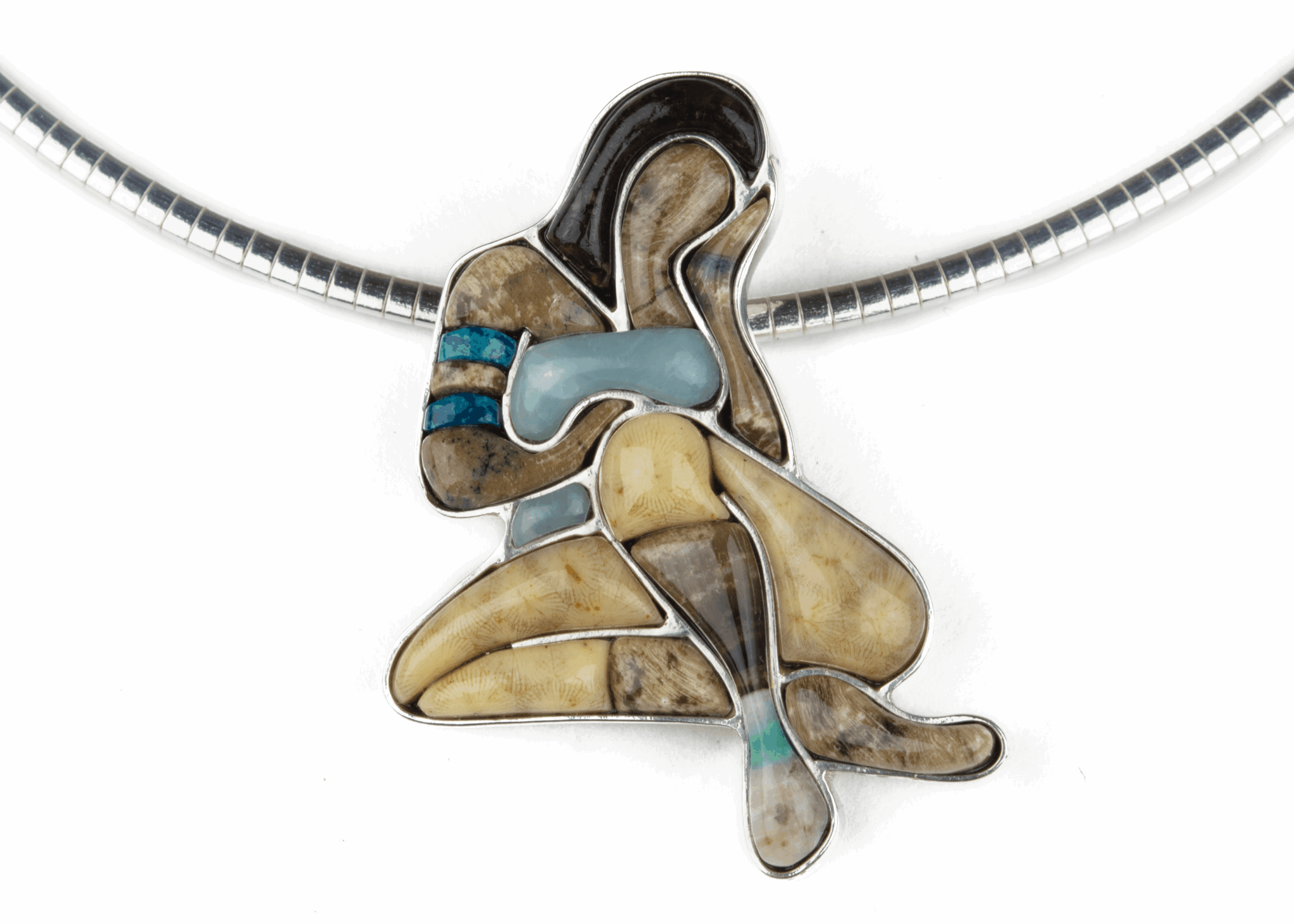
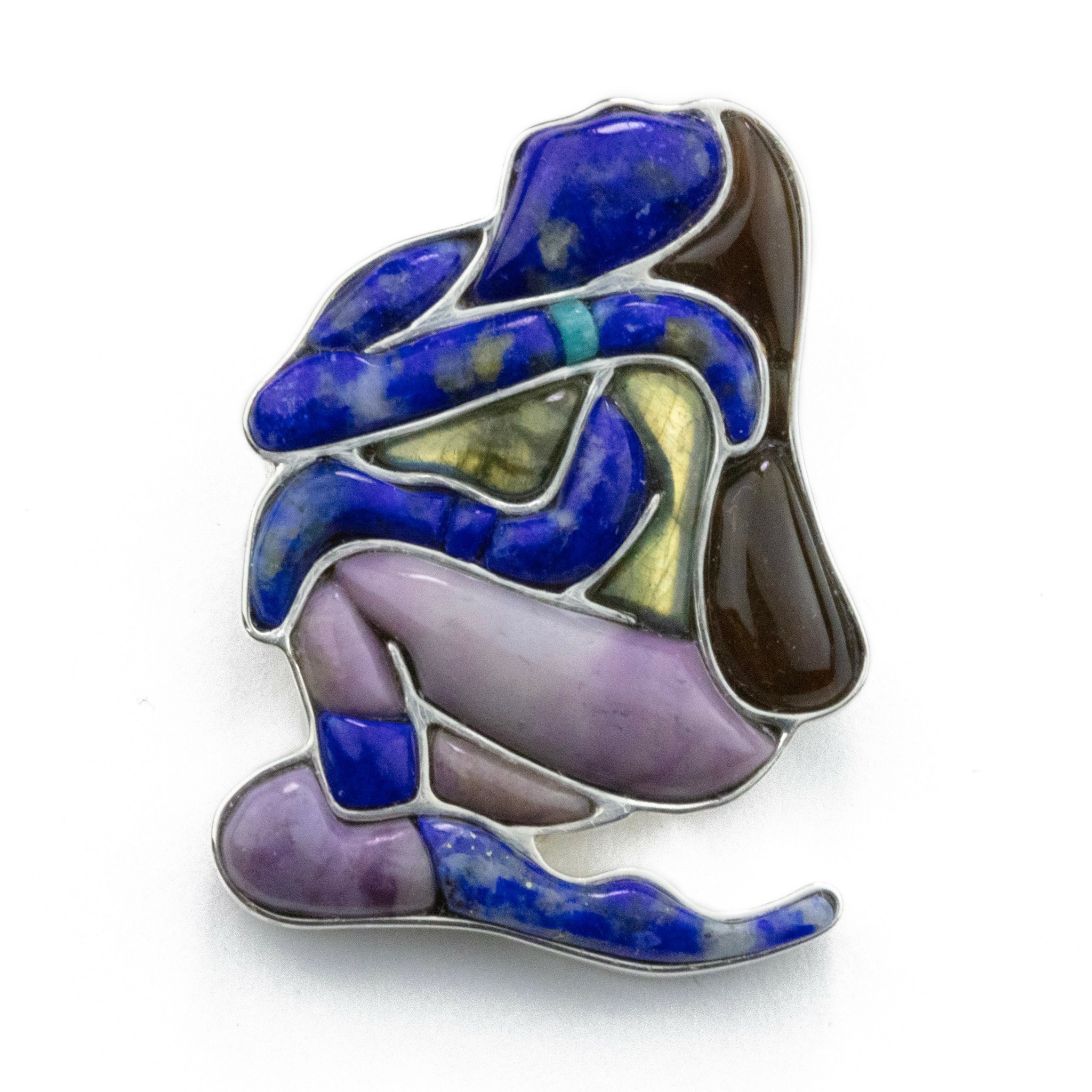
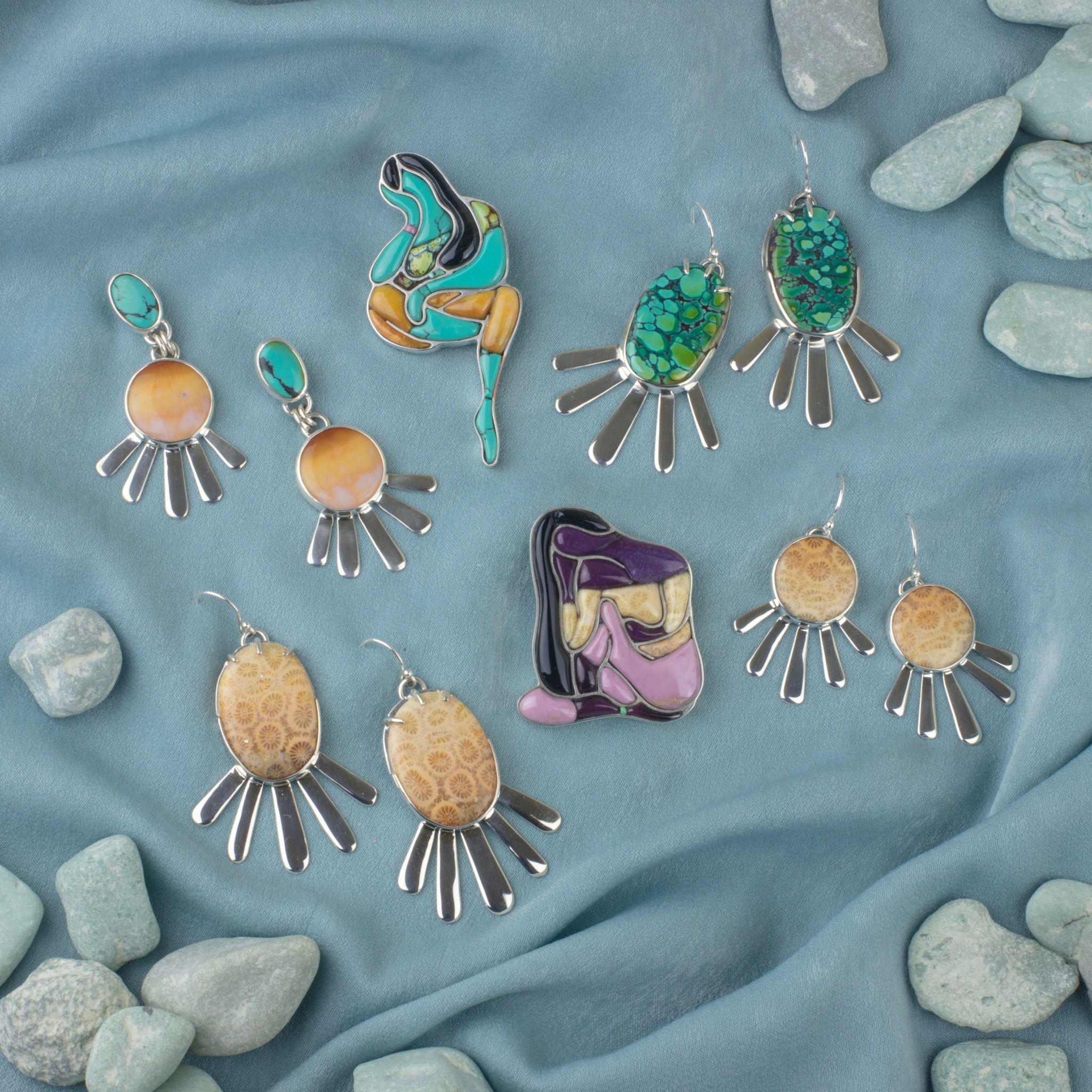
Image Credits
Caitlin Albritton and Scott Pautler


